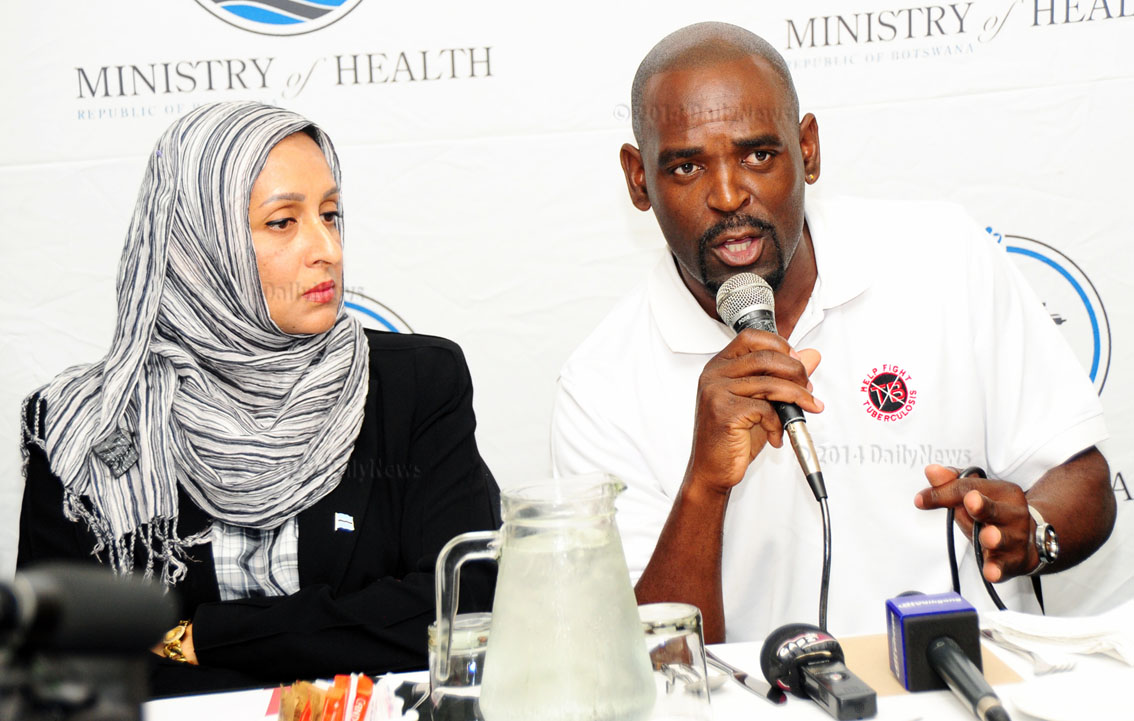Botswana grapples with TB
20 Mar 2014
The challenge of dealing with TB continues to undermine Botswana’s gains, despite significant strides registered in the national HIV response.
The deputy permanent secretary-preventive measures in the Ministry of Health, Ms Shenaaz El-Halabi said this at a tuberculosis (TB) press briefing on Wednesday, March 18. She said Botswana’s current estimates of HIV prevalence remained among the highest globally, towering at around 16.9 per cent.
She added that TB remained an important cause of morbidity and mortality globally as well as nationally and it was the most important opportunistic infection among people living with HIV.
“People living with HIV have a 10 per cent annual risk of developing TB compared to a 10 per cent lifetime risk among those who are HIV negative,” said Ms El-Halaabi. She said Botswana’s notable gains, reported in the seventies to contain the TB scourge were rapidly eroded, resulting in a rapid increase of TB cases.
She revealed that in 2012, close to 7 000 cases of TB were reported across the country, adding that the TB burden per capita in Botswana remained among the highest globally with an estimated rate of new episodes of TB as high as 408 cases per 100 000 population in 2012.
She added that such numbers were high when compared to rates elsewhere and was close to four times the global equivalent. “As much as 63 per cent of these patients were co-infected with HIV. Such high co-infection rates justify the urgent call for a comprehensive TB/HIV collaborative response,” said Ms El-Halaabi.
She further revealed that in most cases TB can be cured by taking a combination of several drugs for six to eight months. However, she said, inappropriate and incomplete treatment should be avoided because the TB bacteria can develop resistance to multiple drugs.
Ms El-Halaabi warned that treatment of drug resistant TB is currently longer, more toxic, more complex and less effective than for drug susceptible TB. She added that each year close to 100 new cases of multi drug resistant (MDR) TB across the country are confirmed.
“We have started working in a much more integrated manner to improve patient outcomes. For example, we have developed and are implementing a national TB/HIV policy guideline to ensure that there is the necessary policy environment for integration,” she said.
She explained that the policy has three intentions; firstly to create a mechanism for collaboration through coordinating structures at all levels, secondly to define critical interventions aimed at decreasing the burden of TB among people living with HIV such as screening patients for TB among HIV patients, and thirdly the need to scale up interventions that seek to decrease the burden of HIV among TB patients, such as the provision of ARVs and cotrimoxazole.
The World TB Day commemoration is billed for Molepolole on March 24. For her part World Health Organisation country representative Dr Felicitous Zawaira said while there are proven TB/HIV interventions, challenges continue to surface in many national TB programs.
She said such challenges include delayed detection and treatment, lack of access to treatment, challenges in completing treatment and weak political support for TB programs. “We therefore need media intervention to mitigate these challenges.
The media is regarded as a catalyst for change and has proven to be an effective tool in promoting awareness among masses. So please use this resource responsibly for the common good and to the best of your ability knowing that the community relies on you,” said Dr Zawaira. ENDS
Source : BOPA
Author : Omphile Ntakhwana
Location : GABORONE
Event : Press conference
Date : 20 Mar 2014










